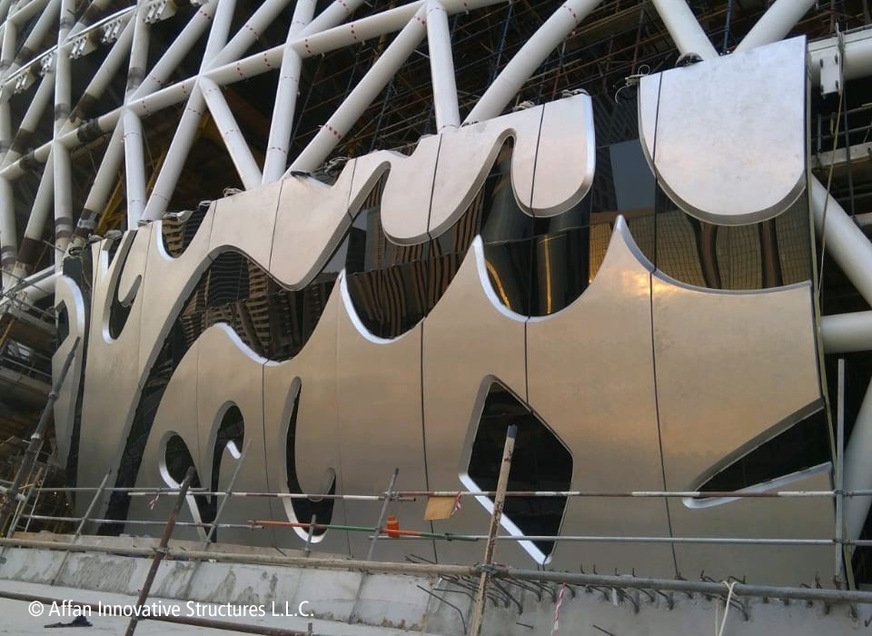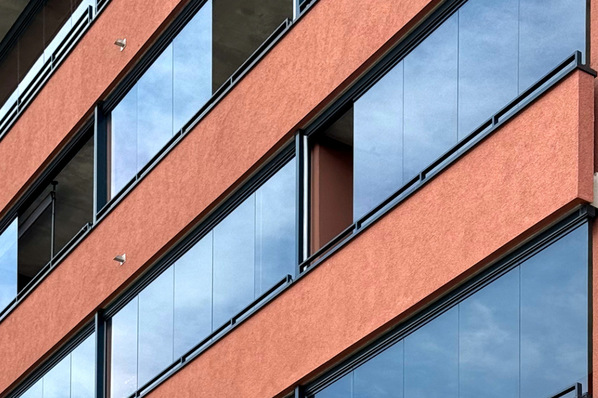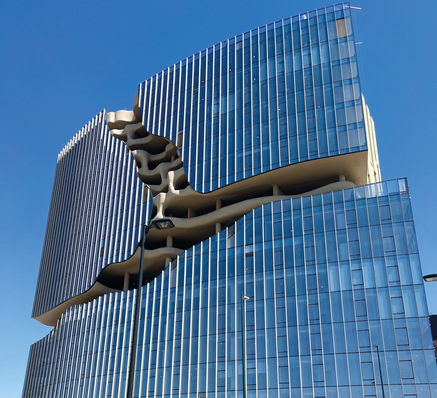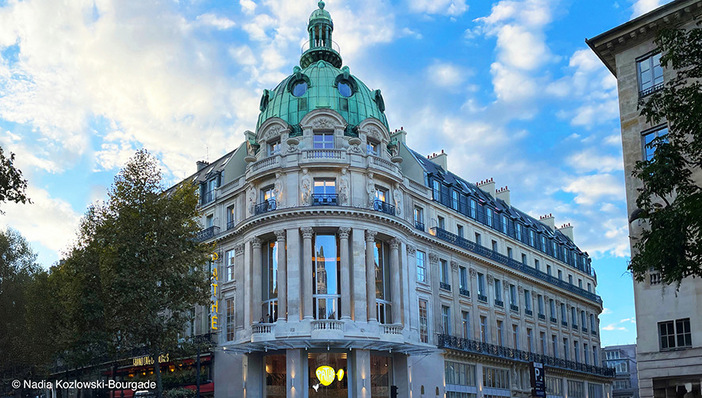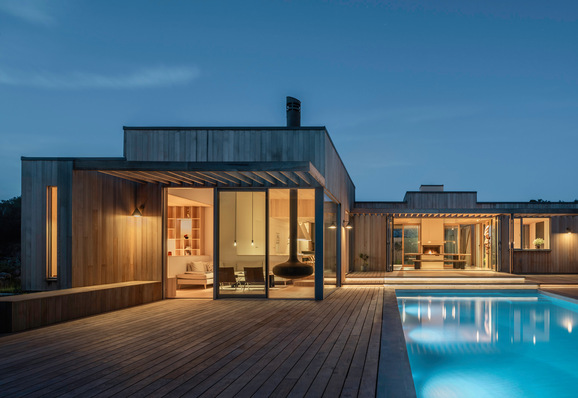The toroidal-shaped building with the striking opening at its centre was designed by Shaun Killa of Killa Design. BuroHappold is responsible for the engineering, BAM International for the construction and AFFAN Innovative Structures manufactures the facade made of fibre reinforced stainless steel, which is broken up by thousands of custom-made insulating glass elements and provides it with its unique calligraphic ornamental form. According to Shaun Killa, Feng Shui was the inspiration behind the design.
In Feng Shui, round forms symbolise the fertility of the earth, the boundlessness of the sky, and the emptiness between them the unknown, i.e. the future. The Arabic characters reproduce quotes from the ruler of Dubai and founder of the museum, Sheikh Mohammed bin Rashid Al Maktoum.
"The three-dimensional shape represents an unprecedented challenge in every sense," explains Fernando Morante, Technical Director of AFFAN. "Even if you've planned curtain walls for decades, you always start from scratch when working on such a project.” Commencing in the area of fire safety, there were no valid norms and standards, therefore AFFAN developed a special, ultra-lightweight composite for the outer skin, which passed all fire safety tests with flying colours.
3D shapes are always complex
Not only in terms of the high-tech building material, but also in terms of the elaborate 3D construction using CATIA, they borrowed a lot of ideas from the aviation sector. "In the pre-digital era you would not have been able to plan this spectacular building," Fernando Morante confidently claims. Around 7000 insulating glass elements, each of which are uniquely formed, are embedded in the outer skin, along with approx. 36.000m of Edgetech Super Spacer TriSeal Premium Plus spacer.

Fernando Morante is speaking from experience: "Since we used Super Spacer for the first time ten years ago for free-form insulating glass units in the Sheikh Zayed Mosque in Abu Dhabi, we have not had any problems with the panes of glass whatsoever. Therefore, for me, Super Spacer was the GO TO product to be assigned a key role in the realisation of the "Museum of the Future" right from the start. Due to the flexibility of the material, we can go to the limits of what is technologically feasible. Using rigid spacers, perfectly and individually shaped windows with very complex shape would have been virtually impossible to create", continues Fernando Morante, "especially since the quality requirements are extremely high - unsurprisingly for a building that will set standards in every way."
When it opens in 2019, Fernando Morante is confident that the museum will be one of the most, or even the most, iconic structure fitting the legacy and dreams created by Sheikh Mohammed.
